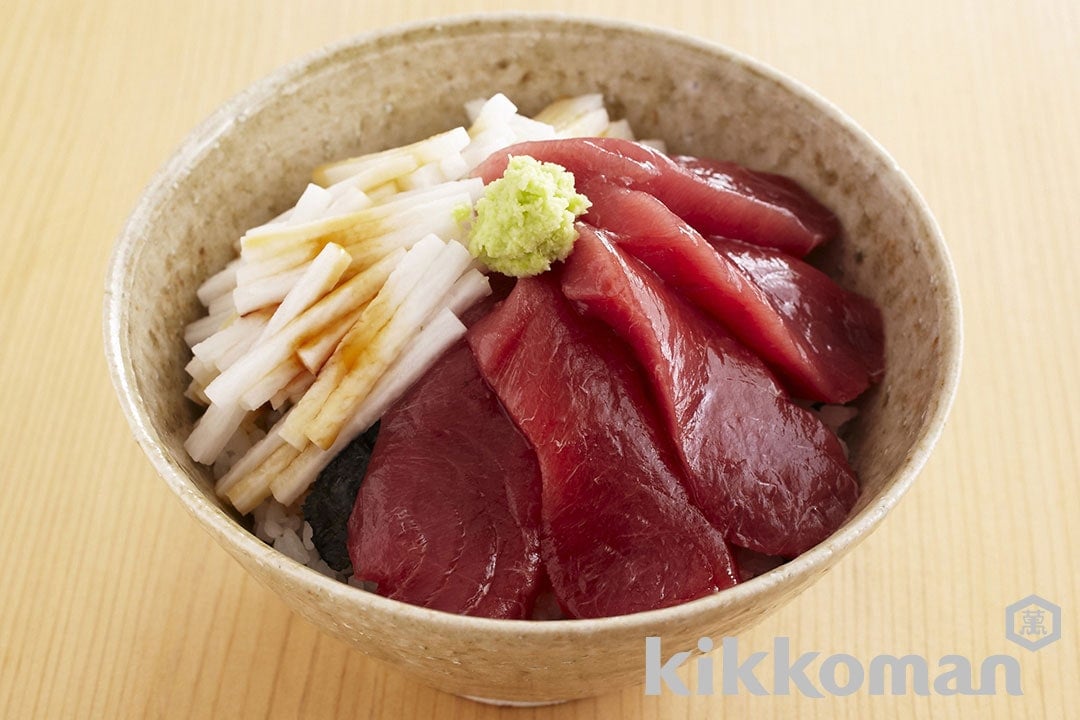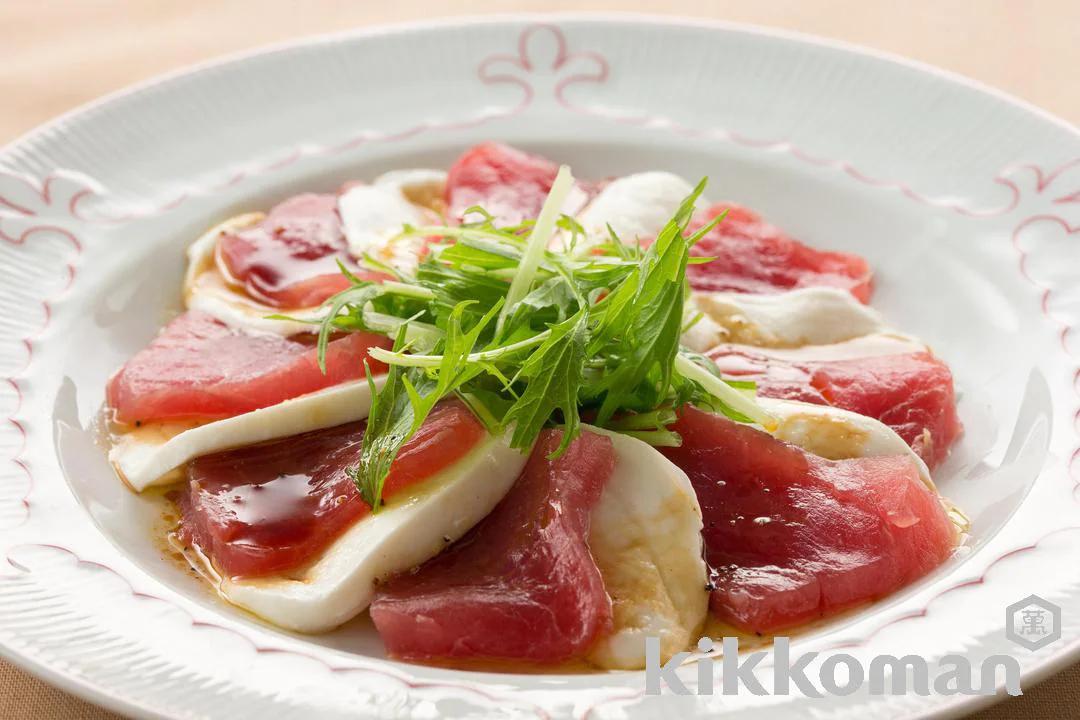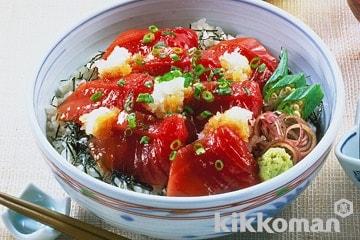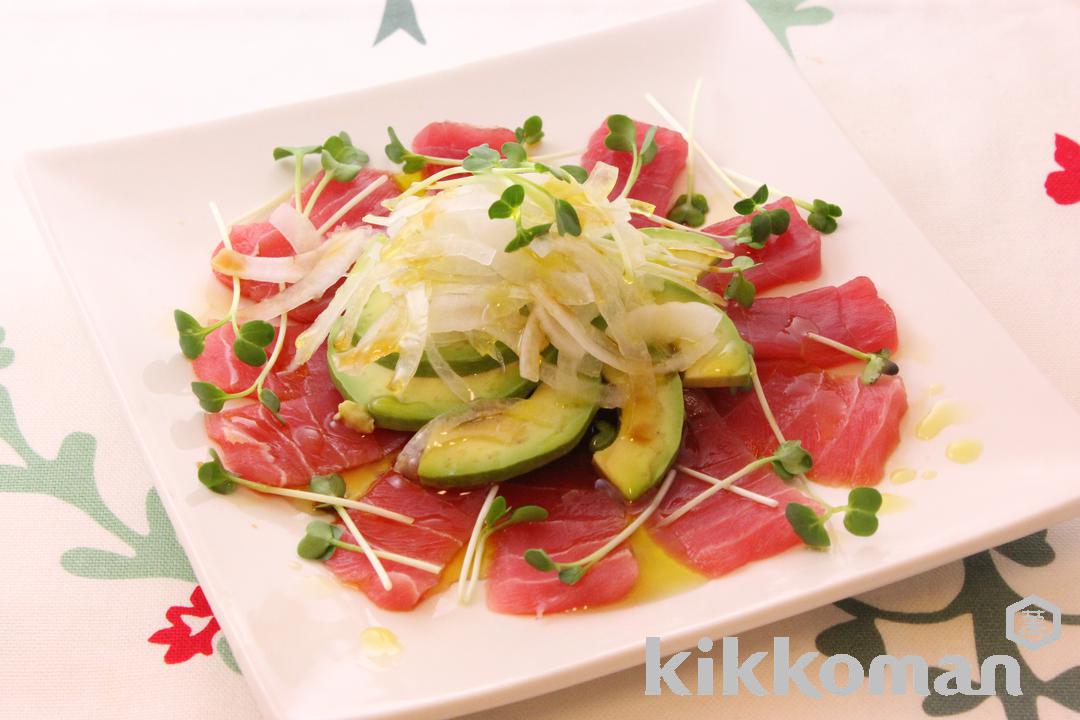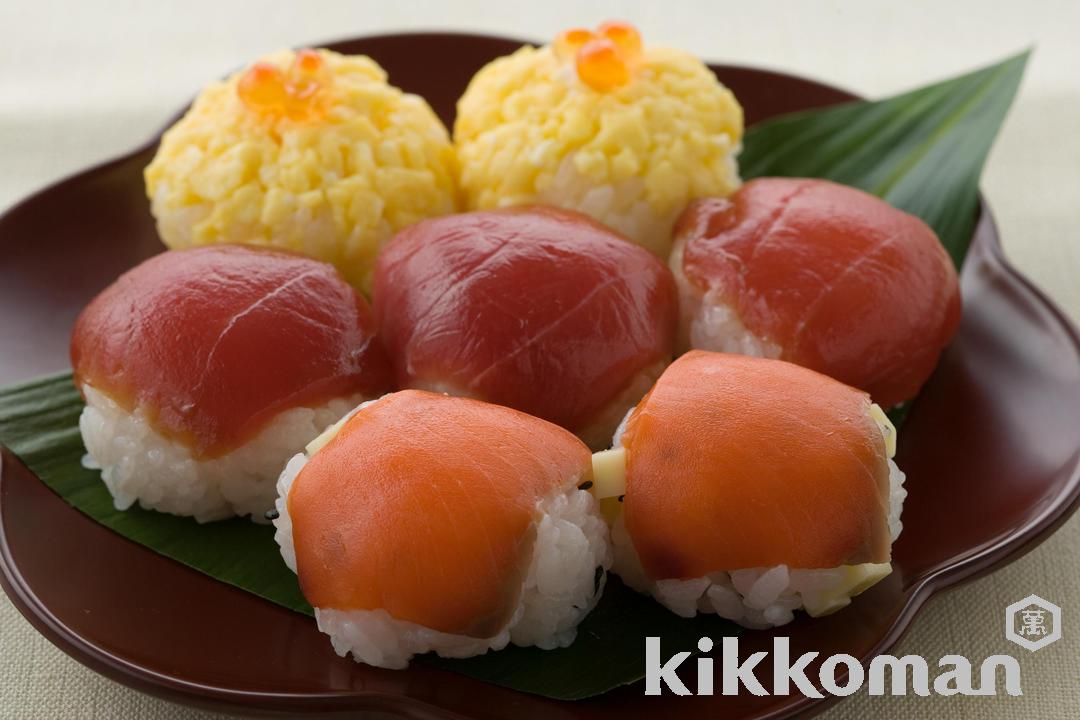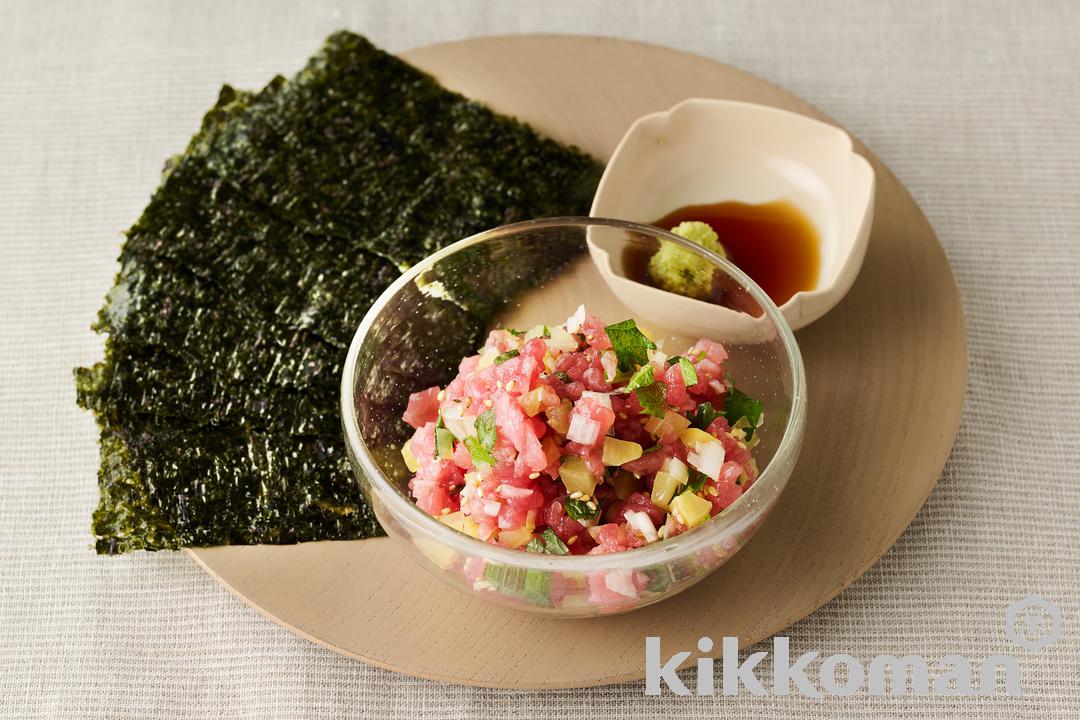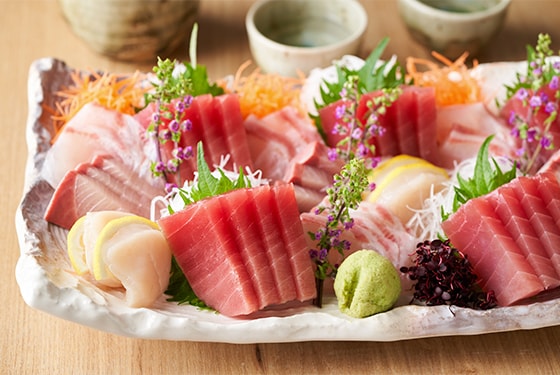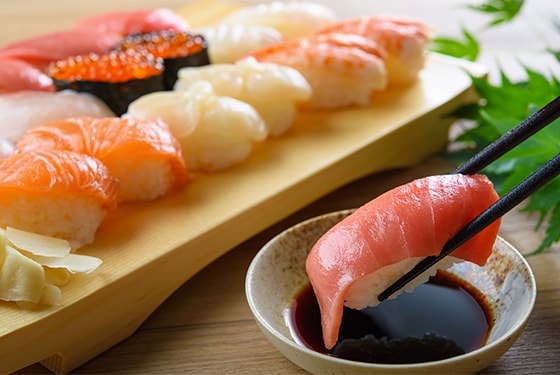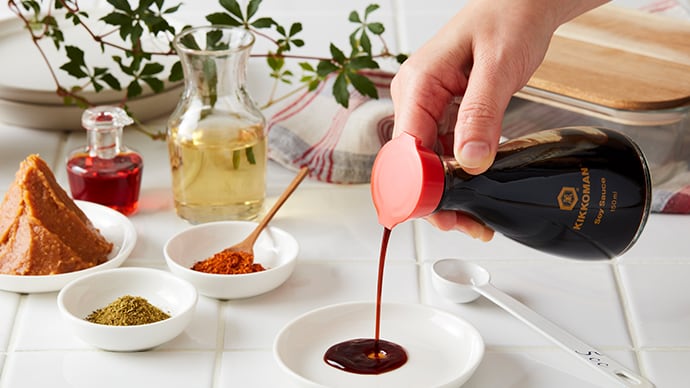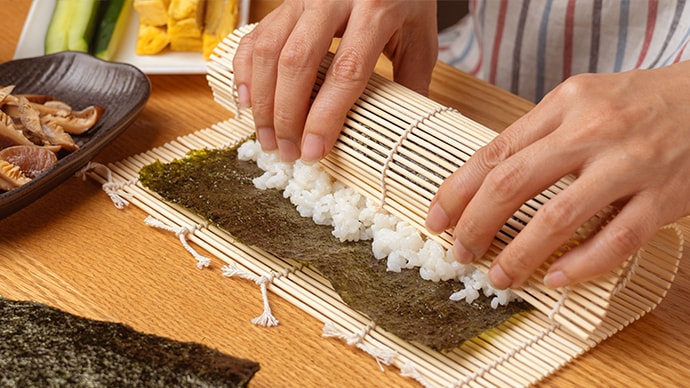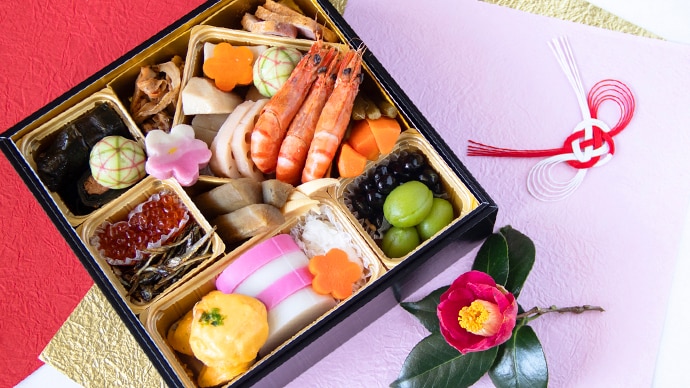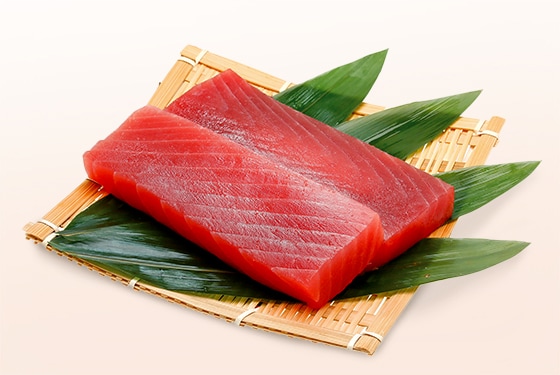
Red-meat fish that offers various tastes and textures depending on the tuna part, popularly eaten as sushi or sashimi, and delicious cooked as well
What is tuna?
Tuna / maguro (まぐろ in Japanese) is a large, migratory fish measuring approximately 1-3 m in length, primarily eaten as sashimi or sushi. There are a number of different tuna species, the main ones consumed by people are Pacific bluefin tuna (kuromaguro), southern bluefin tuna (minami maguro), yellowfin tuna (kihada), bigeye tuna (mebachi), and albacore (binnaga). Though usually eaten fresh and uncooked, there are also many ways of cooking tuna such as grilled with salt, broiled in sweet teriyaki sauce, simmered in soups, or cubed and stewed.
Raw tuna / maguro, popularly eaten as sushi, have various names depending on the area of the fish:
- Lean Tuna / Akami (Sashimi-grade)
The area surrounding the tuna's spine and dorsal area has the most consumable meat. If a reference is made to “tuna”, this is the portion most likely being referred to.
- Medium-fatty Tuna / Chutoro (Sashimi-grade)
This part of the tuna comes from the dorsal and belly, running all the way back to the tail. The texture is that of lean tuna / akami with the added sweetness of fat.
- Super-fatty Tuna / Ootoro (Sashimi-grade)
The super-fatty part of tuna comes from the belly up through to the ventral region near the head and only one-fifth of this fatty cut is consumable. With an intense sweetness, it is more similar to eating the umami of the fat than the meat.
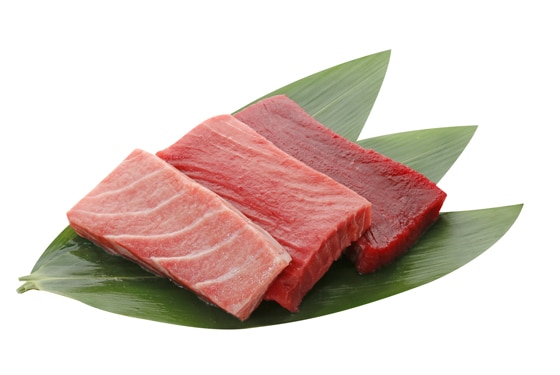
Nutrition facts
Tuna is rich in high-quality protein and is excellent for maintaining muscles and repairing cells. It is also rich in vitamins B6, B12, and D, which are useful for energy metabolism and maintaining bone health. Tuna also contains iron, which helps prevent anemia, and taurine, which helps recover from fatigue.
The lipids in tuna contain omega-3 fatty acids such as DHA and EPA, which improve blood flow and contribute to cardiovascular health. Its lean part / akami is high in protein and low in fat, and contains anserine, a component found in migratory fish that swim long distances at high speeds and is expected to have a fatigue recovery effect. The fatty part of tuna / toro is rich in omega-3 fatty acids such as DHA and EPA, and contains more vitamins A, D, and E than its lean part. However, because it is high in fat, it is high in calories.
Because tuna is a seafood with a relatively high concentration of mercury, in Japan it is recommended for pregnant women to eat tuna up to 80 g, while for other adults, 100g to 200g or less per week.
Storage to prevent food loss
Fresh tuna should be used up within 1-2 days, and any leftovers should be frozen. Frozen then thawed tuna should be eaten on the day of purchase. Refreezing tuna after it has been thawed should be avoided as it reduces the flavor and deteriorates the fresh-looking color. If you end up with leftover thawed tuna, it can last one day in the refrigerator if preserved in soy sauce.
Trivia
The lean tuna around the backbone that can be scooped out with a spoon is called "nakaochi," and the fatty portion that can be scraped off the skin is called "negitoro." As tuna are rather large and quite valuable, even the portions that would normally be thrown away on other fish varieties are eaten with gusto. Tuna has been eaten in Japan since the Jomon period (16,000-3,000 BCE), but it became widely popular during the Edo period (1603-1868) when Japanese people began to eat it raw marinated in soy sauce.
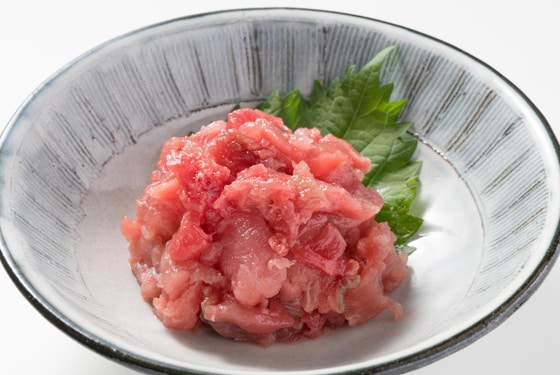
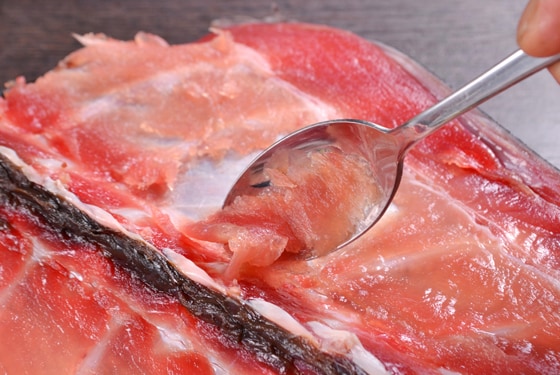
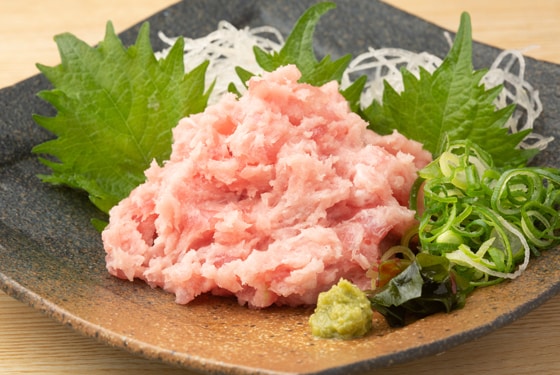
Related Recipes
10min
355kcal
551mg
20min+
507kcal
1063mg


